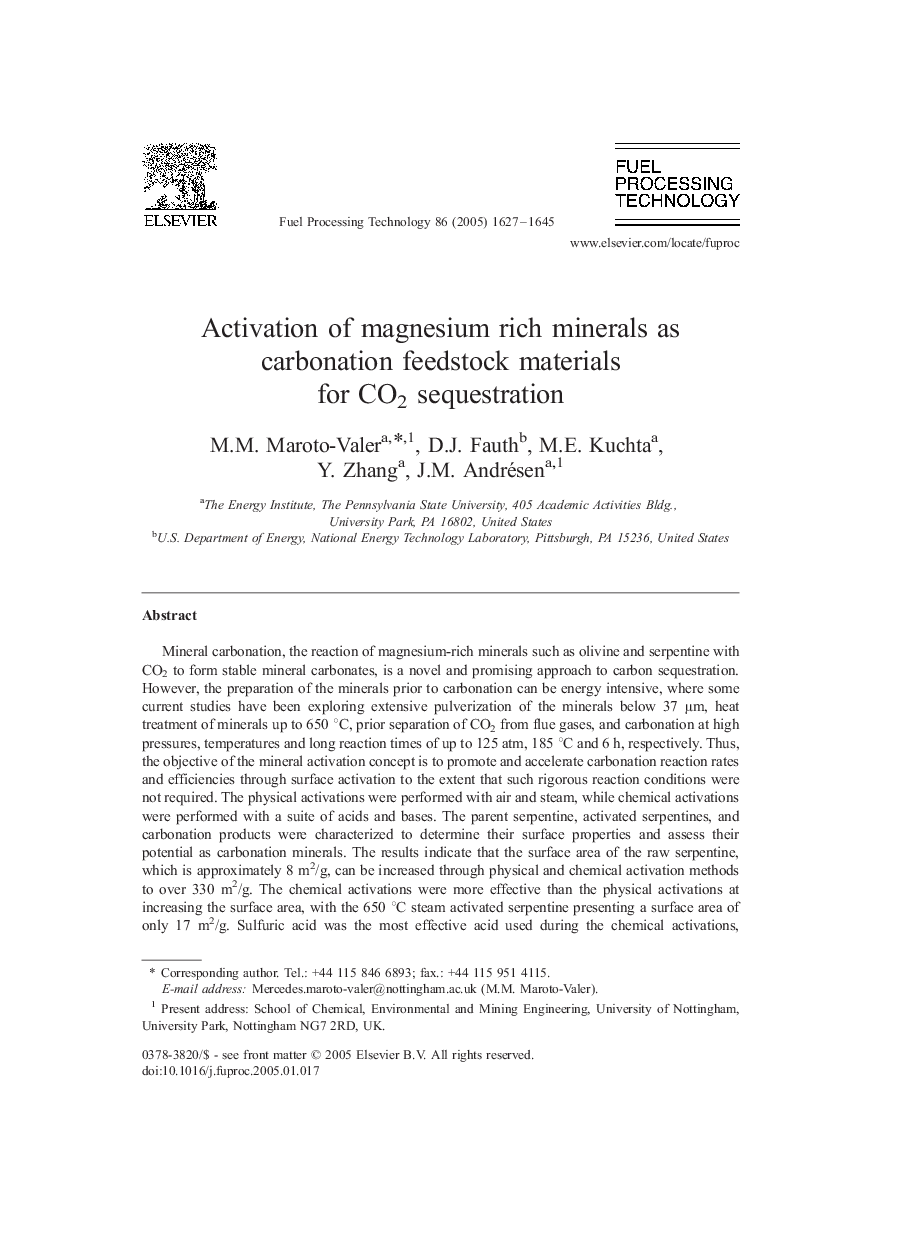| کد مقاله | کد نشریه | سال انتشار | مقاله انگلیسی | نسخه تمام متن |
|---|---|---|---|---|
| 9632213 | 461762 | 2005 | 19 صفحه PDF | دانلود رایگان |
عنوان انگلیسی مقاله ISI
Activation of magnesium rich minerals as carbonation feedstock materials for CO2 sequestration
دانلود مقاله + سفارش ترجمه
دانلود مقاله ISI انگلیسی
رایگان برای ایرانیان
موضوعات مرتبط
مهندسی و علوم پایه
مهندسی شیمی
مهندسی شیمی (عمومی)
پیش نمایش صفحه اول مقاله

چکیده انگلیسی
Mineral carbonation, the reaction of magnesium-rich minerals such as olivine and serpentine with CO2 to form stable mineral carbonates, is a novel and promising approach to carbon sequestration. However, the preparation of the minerals prior to carbonation can be energy intensive, where some current studies have been exploring extensive pulverization of the minerals below 37 μm, heat treatment of minerals up to 650 °C, prior separation of CO2 from flue gases, and carbonation at high pressures, temperatures and long reaction times of up to 125 atm, 185 °C and 6 h, respectively. Thus, the objective of the mineral activation concept is to promote and accelerate carbonation reaction rates and efficiencies through surface activation to the extent that such rigorous reaction conditions were not required. The physical activations were performed with air and steam, while chemical activations were performed with a suite of acids and bases. The parent serpentine, activated serpentines, and carbonation products were characterized to determine their surface properties and assess their potential as carbonation minerals. The results indicate that the surface area of the raw serpentine, which is approximately 8 m2/g, can be increased through physical and chemical activation methods to over 330 m2/g. The chemical activations were more effective than the physical activations at increasing the surface area, with the 650 °C steam activated serpentine presenting a surface area of only 17 m2/g. Sulfuric acid was the most effective acid used during the chemical activations, resulting in surface areas greater than 330 m2/g. Several of the samples produced underwent varying degrees of carbonation. The steam activated serpentine underwent a 60% conversion to magnesite at 155 °C and 126 atm in 1 h, while the parent sample only exhibited a 7% conversion. The most promising results came from the carbonation of the extracted Mg(OH)2 solution, where, based on the amount of magnesium recovered in the precipitate after the 3.5 h reaction, the carbonation efficiency was estimated to be at least 53%. Reaction products included several hydrated magnesium carbonate compounds. The carbonation reaction was conducted at ambient temperature, 20 °C, and low pressure, 45 atm.
ناشر
Database: Elsevier - ScienceDirect (ساینس دایرکت)
Journal: Fuel Processing Technology - Volume 86, Issues 14â15, October 2005, Pages 1627-1645
Journal: Fuel Processing Technology - Volume 86, Issues 14â15, October 2005, Pages 1627-1645
نویسندگان
M.M. Maroto-Valer, D.J. Fauth, M.E. Kuchta, Y. Zhang, J.M. Andrésen,